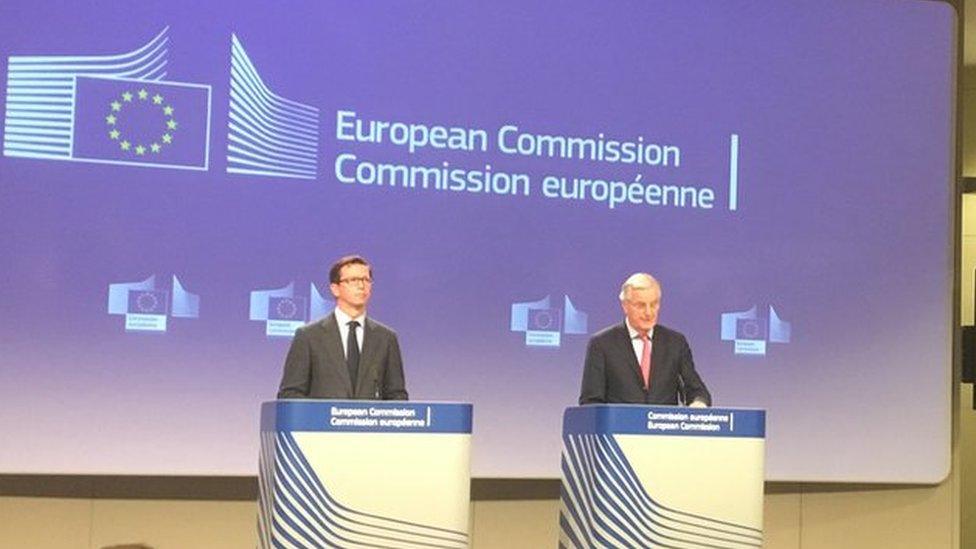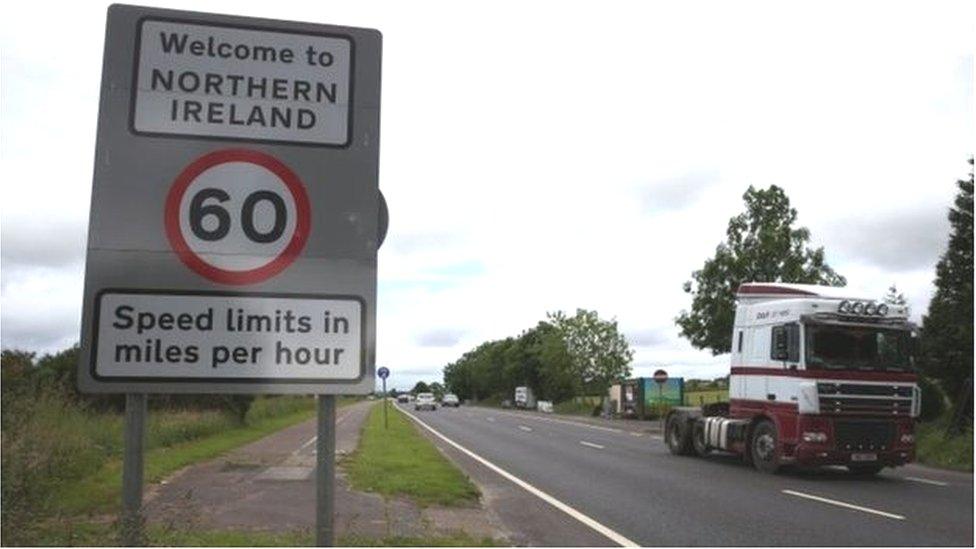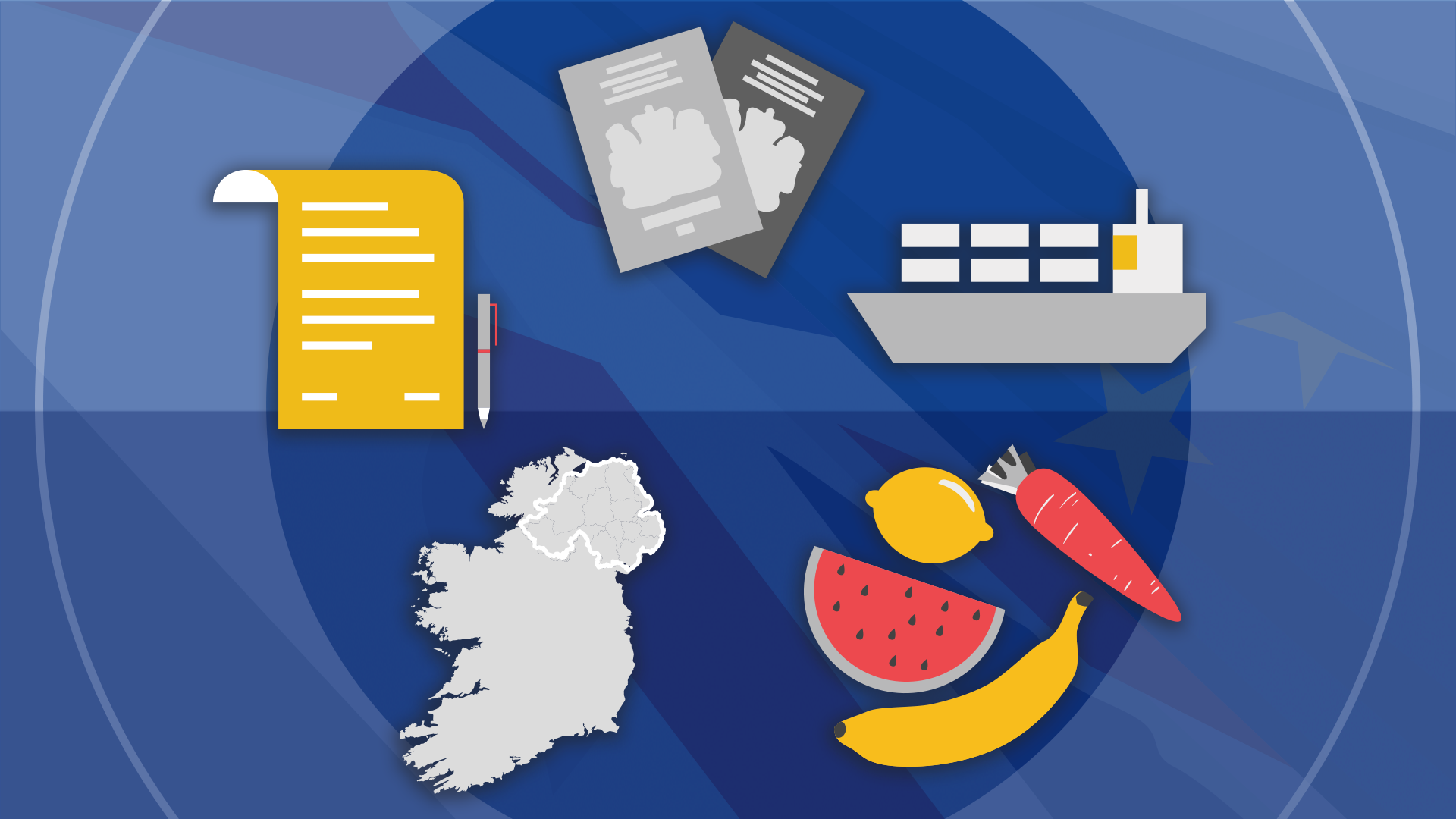Way forward: Where are we on Brexit and the border?
- Published

Michel Barnier is the EU's chief Brexit negotiator
In the early hours of 8 December, the EU and UK reached a political agreement that there will be no hard border in Ireland.
To some observers that deal was a necessary fudge which allowed the talks to move to the next stage.
But on Friday, the EU's chief negotiator was clear that fudging the issue is not sustainable.
Michel Barnier said that the border solution must become "precise, clear and unambiguous" as it is written into a legally binding withdrawal agreement.
Mr Barnier reminded us of the key parts of the December deal on Ireland, which laid out three options for avoiding a hard border.
OPTION A
The UK's preferred option is to sort out the border in the context of an overall trade deal.
Mr Barnier said this was now looking unlikely because of the UK's insistence that it is leaving the customs union and single market.
That limits the type of deal on offer and implies a trade relationship similar to the EU/Canada. It would not be a deep enough relationship to avoid a hard border.
OPTION B
Effectively a special deal for Northern Ireland: "specific solutions" which recognise the unique circumstances on the island of Ireland.
This could be a political arrangement or the use of technology which could eliminate the need for border checks.
Some Brexit supporters are keen advocates of technological solutions which range from barcodes to airships.
However, Mr Barnier said the UK has yet to bring forward any solutions.
OPTION C
Regulatory alignment: this means the UK will continue to follow the EU rules of the single market and customs union which are necessary to protect cross border cooperation and the all-island economy.
There appear to be significant differences between the UK and EU on what rules would need to be followed and what alignment really means.
UK ministers have articulated a minimalist view of alignment whereas the Irish government thinks it would cover a substantial number of areas.
Nonetheless, Mr Barnier said work was advancing on this option.
'We must now start legally defining how this scenario would work in operational terms. There must be no ambiguity here," he said.
He added that the UK had agreed to the necessity of working out how to "operationalise" full alignment, so long as work continues in parallel on options A and B.
He also spelled out a very important point difference between alignment and the other two options.
Alignment, he told us, needs to be written into the formal Withdrawal Agreement to guarantee that there will be no hard border whatever the circumstances.

Mr Barnier (right) was speaking on Friday at the conclusion of a week of technical discussions between civil servants on both sides
However the other options can only be made operational at a later date, in the context of the future relationship between the EU and UK.
Effectively, the UK will be asked to sign up to a legal agreement where alignment will be the default option.
That default will only be overridden if a better solution can be found - with the EU presumably acting as arbiter of what is "better".
There is potential political danger here - will that arrangement be acceptable to the majority of Theresa May's cabinet?
Back in December David Jones, the former Brexit minister, expressed concern about what alignment could mean in the long term.
"The worry about that is, of course, that it could relate to very important areas such as, for example, agriculture which we would want to throw into the mix in negotiating a free trade agreement with a third country," he said.
"And if this was to persist, it could severely handicap our ability to enter into those free trade agreements, so I think we do need to see that particular provision refined."
The government's DUP partners have also expressed concerns.
On Friday their MEP, Diane Dodds, said: 'What we don't want to see... is that we only codify one of the options legally and not the other two.
"That would seem to me to provide no incentive whatsoever for the EU to move to what it calls the imaginative and flexible solutions."
- Published9 February 2018

- Published9 February 2018

- Published1 February 2018

- Published7 February 2018

- Published30 December 2020
